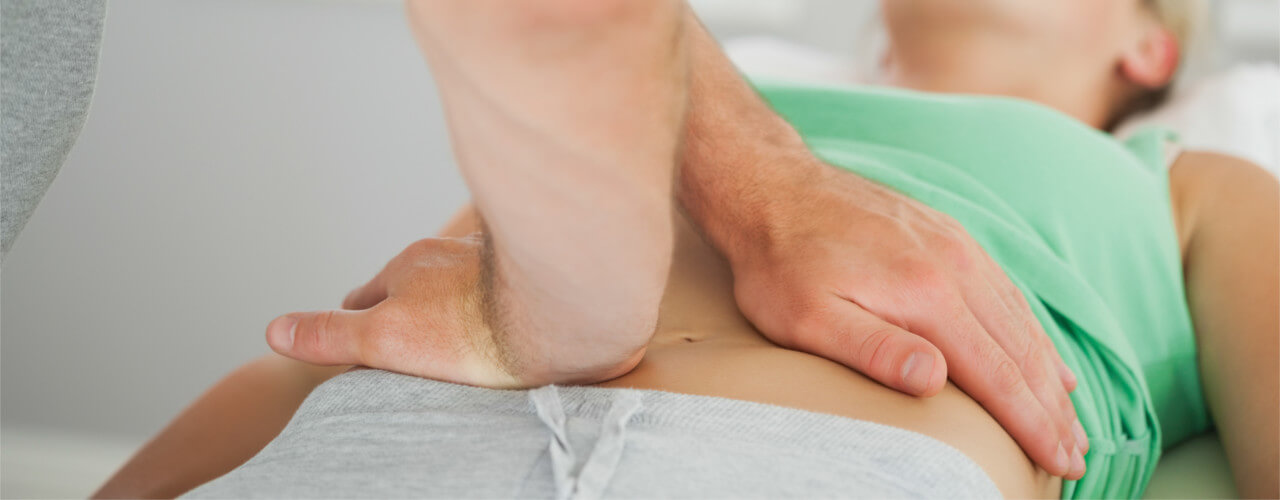Pelvic Pain
Dealing With Uncomfortable Pelvic Pain?
Physical Therapy May Help.
Have you been dealing with discomfort in your pelvic region? If you are not sure exactly what the cause of your pain is, pelvic pain can be an embarrassing thing to deal with, not to mention frustrating.
This type of pain may be restricted at best. It can interrupt your everyday life and stop you from doing any of the tasks or things you enjoy on a daily basis.
Fortunately, a solution to your dilemma is available. Rehabilitation of the pelvic floor will help relieve the symptoms of pelvic dysfunction and improve muscle strength. The goal is to manage existing pain and prevent it from coming back or getting worse in the future.
How does physical therapy help pelvic pain?
Pelvic floor rehabilitation is a type of physical therapy that has been shown to treat a number of conditions that result in pelvic pain. Although many people believe that only women can receive this kind of therapy, all genders can benefit!
There are several different kinds of pelvic disorders that can be relieved by PT treatments. For example, with pelvic therapy, painful intercourse and infertility issues can be assessed and improved. Pelvic organ prolapse, dyspareunia, and diastasis recti are several less common disorders that can be treated as well.
Some of the most common pelvic conditions that physical therapy treats include:
Postpartum pelvic pain
After giving birth, it is normal for new mothers to suffer damage to their pelvic floor from strained muscles and/or connective tissue. In addition to repairing any weakened muscles or tissues, pelvic floor recovery leads to reducing the discomfort they may experience.
Endometriosis
Endometriosis is a prevalent disease that affects many individuals. It can damage bones, muscles, ligaments, and nerves in the pelvic region. Thankfully, physical therapy can help.
In addition to strengthening the pelvic floor muscles, pelvic floor rehabilitation may help alleviate the discomfort and bloating that you can experience with endometriosis.
Urinary incontinence/bladder dysfunction
In order to treat and eliminate urinary incontinence symptoms and issues with the bladder, pelvic floor rehabilitation will concentrate on improving the muscles beneath your bladder.
Rather than merely treating the symptoms, a physical therapist can help assess the origin of your urinary incontinence issue to treat it at the source.
Pain following abdominal surgery
Pelvic floor rehab can help to break up scar tissue, increase strength and regain range of motion in your abdomen/pelvic area if you are healing from a recent surgical procedure.
Constipation
Pelvic floor rehabilitation can loosen and relax the muscles in your pelvic and anal areas, which can help relieve and eliminate constipation.
What does pelvic floor therapy involve?
The pelvic floor muscles, tendons and ligaments all serve an incredibly important function since they protect your body’s core.
Your pelvic doctor will do a detailed review of your condition at your first appointment. The procedures involved in your recovery plan for the pelvic floor will depend on the outcome of your initial examination.
Your pelvic doctor will do a detailed review of your condition at your first appointment. The procedures involved in your recovery plan for the pelvic floor will depend on the outcome of your initial examination.
A personalized care plan that will meet your individual needs will be developed. Usually, this will require many types of exercise, heat therapy, and massage to decrease discomfort, minimize symptoms, and possibly cure the condition.


